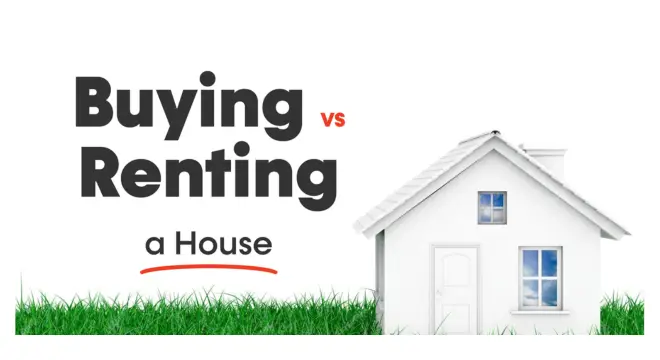New Home Sales Surge by 7.4% in March 2025: What’s Fueling the Housing Market Boom?
What’s really happening in the U.S. housing market right now? Why did new home sales suddenly jump in March 2025? And what does this mean for the economy moving forward?
According to the most recent data, new home sales rose by 7.4 percent to 724,000 units in March 2025, up from 674,000 units in February. The increase wasn’t only large. It also exceeded economists’ expectations, suggesting that the housing sector remains sound despite inflation and rising interest rates. The spring season brought additional supply to the market, further supporting the growth in sales.
Let’s dive into what’s driving this growth and what it means for the future of the economy.
2. Key Statistics from March 2025
Sales Performance:
- New single-family home sales jumped 7.4% from February to March 2025, reaching a seasonally adjusted annual rate of 724,000 units.
- This not only exceeded the consensus forecast of 682,000 units but even surpassed the highest economist prediction of 700,000 units.
- (For reference, February’s figure was slightly revised down to 674,000 units.)
Price Trends:
- The median sales price for new homes declined to $403,600, a 7.5% decrease compared to a year ago, showing affordability improvements.
- Meanwhile, the average sales price edged up to $497,700, indicating stable demand for higher-end properties.
Regional Sales Breakdown:
- South: Led the surge, accounting for the majority of the national increase.
- Midwest: Also posted solid gains.
- Northeast and West: These regions faced minor declines, highlighting ongoing affordability pressures.
3. Inventory and Supply
Housing Inventory:
In March 2025, the total number of new homes for sale reached 503,000. That is the highest inventory level since November 2007 and reflects how quickly the housing market has rebounded from years of tight supply. More homes on the market means more options for buyers, which will help to satiate growing demand.
Months of Supply:
There are currently about 8.3 months of supply in the housing market based on the current sales pace. This means that if no new homes were to be listed for sale, it would take 8.3 months for all of the available homes to be sold. A balanced market generally maintains around 6 to 7 months of supply. This level implies that there is a good level of available supply for buyers without causing oversupply.
Impact of Spring Supply Bump:
Spring naturally tends to result in more new home listings as sellers tend to list their homes when the flowers bloom.
The “spring supply bump” helped show relatively more homes for sale and this contributed to the increase in sales during March. This is normal seasonal behavior, but the timing and magnitude of the boost was necessary to meet high demand for homes.

4. Market Drivers Behind the Surge
1. Mortgage Rates:
In March 2025, mortgage loan rates for 30-year fixed adjusted to 6.65%. This small shift led to more affordability in homeownership for many buyers because lower rates equate to lower monthly payments. Therefore, for many buyers, this decline has been a significant factor in the increase in new homes sold. While mortgage rates have been increasing over the past few years, this market moving lower offered a window for many prospective home buyers.
2. Economic Resilience:
Despite ongoing challenges like inflation and higher borrowing costs, the U.S. housing market has proven to be surprisingly resilient. The strong recovery of the housing market signals that people still have faith in the long-term stability of real estate. Economic uncertainty hasn’t deterred homebuyers, and many have moved forward with purchasing new homes, showing that demand remains strong.
3. Builder Incentives:
Builders have been responding to the market by providing lower-priced housing options. Many builders are also providing incentives, such as price reductions, alternative financing or upgrades, which have made the homes easier for buyers to purchase. By focusing on being affordable, builders have gained access to a larger pool of potential buyers than they had when values and interest rates were higher.
4. Seasonal Impact:
Spring is traditionally an active time in the housing market, and March 2025 was of course no different. There was the usual spring market boost for listings and buyers, and as is typical with spring, the spring weather, tax refunds, and people’s general desire to be more mobile at this time of year, we had a very respectable number of home sales during this period.
5. Expert Insights and Economic Implications
Analysts’ Opinions:
- Experts believe the 7.4% sales increase indicates strong market fundamentals.
- The surge suggests that the housing market has the potential for continued growth in 2025.
- This growth reflects ongoing demand, signaling a resilient housing sector despite challenges.
Economic Outlook:
- While the housing market remains strong, experts urge caution moving forward.
- Inflation and interest rate changes are still major factors influencing consumer confidence.
- Higher borrowing costs and rising prices may cause potential buyers to hesitate, which could affect the market in the future.
6. Regional Disparities in Sales Growth
South:
- Leading the charge with the largest increase in new home sales.
- Strong housing demand driven by favorable economic conditions, including job growth and relatively lower costs of living.
West & Northeast:
- Slower growth in sales compared to other regions.
- High housing costs and ongoing affordability challenges have held back demand in these areas, affecting overall sales growth.
7. Frequently Asked Questions (FAQ)
Q1: What caused the surge in new home sales in March 2025?
A1: The surge in new home sales can be attributed to a few key factors: a drop in mortgage rates, an increase in available housing inventory, and the typical spring supply boost. Additionally, builder incentives and the overall economic resilience played a significant role in driving demand.
Q2: How does this increase in new home sales impact the overall economy?
A2: A strong housing market signals economic recovery, which is important for job growth, consumer confidence, and broader economic stability. A booming housing market also has a positive effect on other sectors like construction and retail, further boosting the economy.
Q3: Are there regional differences in the new home sales surge?
A3: Yes, there are regional differences. While the South and Midwest saw significant growth, the Northeast and West experienced more moderate increases. These differences are due to various factors like local economic conditions, higher housing costs, and ongoing affordability challenges in certain areas.
Q4: Will this trend continue in the coming months?
A4: Analysts are optimistic that the trend will continue, but regional variations may persist. If mortgage rates stay stable and inventory keeps increasing, the market should remain strong. However, external factors like inflation and interest rate fluctuations could create challenges in the future.
Q5: What should potential homebuyers know about the current market?
A5: Buyers should consider taking advantage of lower mortgage rates while there is plenty of available inventory. However, they should also keep in mind that regional variations in pricing and availability might affect their buying decisions. It’s important to research local market conditions before making a purchase.
7. Conclusion
New home sales rebounded sharply in March 2025 due to improved mortgage rates, a recovery in housing inventory, and of course, the typical spring bump in home supply. As long as mortgage rates remain favorable, we expect the housing market will continue to be resilient and grow further going forward. We should also consider regional differences when making buying decisions.
If you are thinking of buying a new home, the current conditions in the market may create an opportunity for you as a buyer to evaluate your options!


